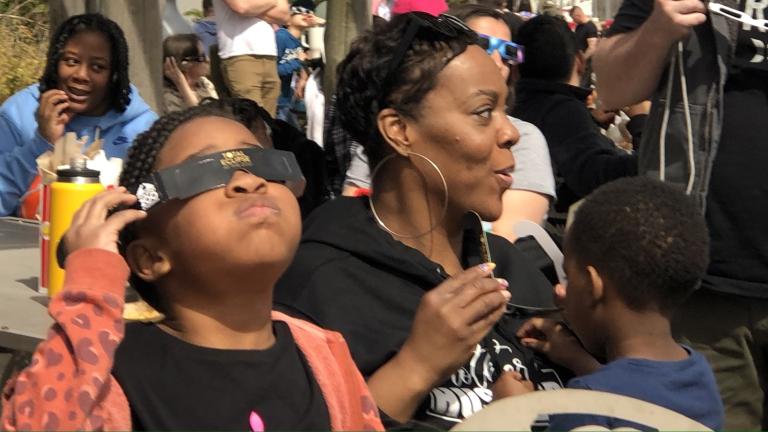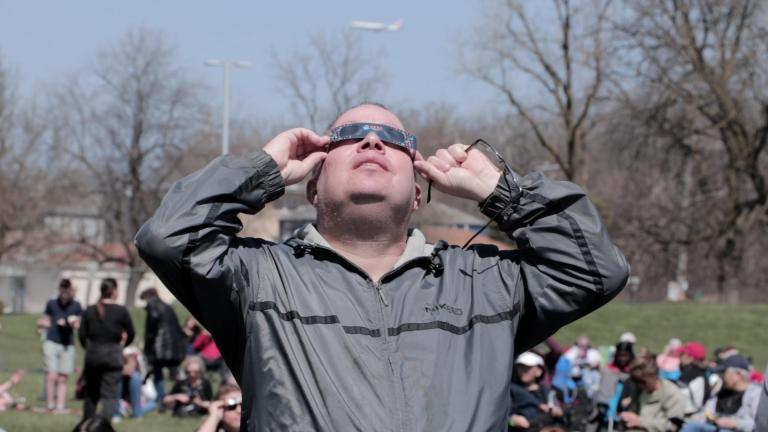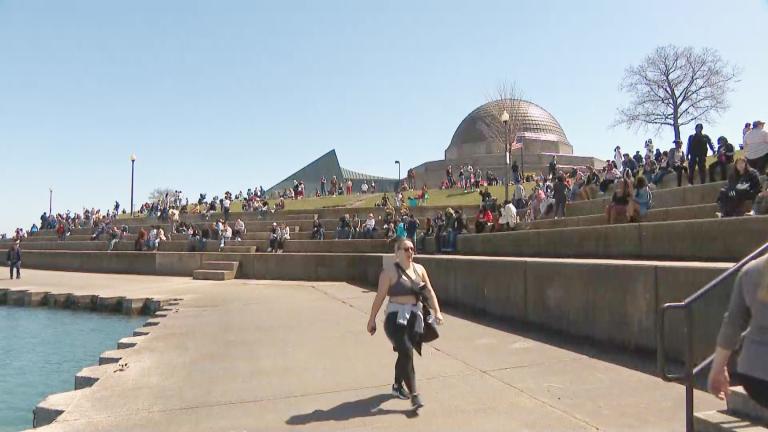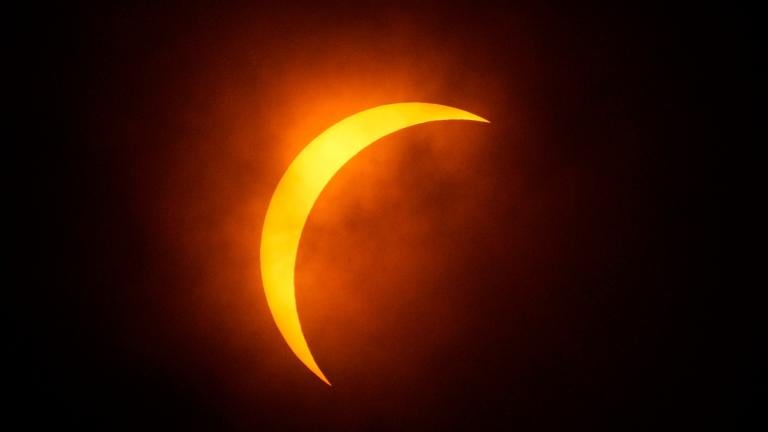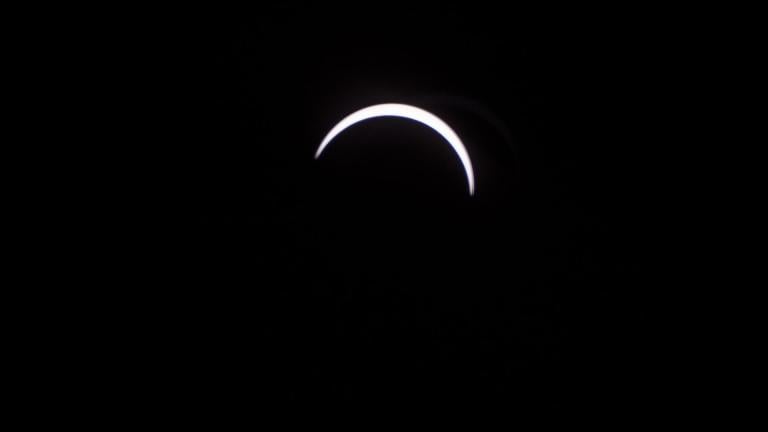The most famous song about the moon being blue is a great American standard. But there’s one thing wrong with it: There’s really no such thing as a blue moon.
“It doesn’t refer to the color,” said Adler Planetarium astronomer Michelle Nichols. “It refers to when you have two full moons in a calendar month and the second one of those two is usually called the blue moon.”
How the term “blue moon” came to be is up for debate. But Tuesday night, a not-blue full moon will grace the sky for the second time this month. On Jan.1, the New Year was launched by the other full moon.
But wait, there’s more: The not-blue blue moon will also be a supermoon.
“The moon’s orbit is not a perfect circle around the Earth – sometimes it’s a little closer to Earth, sometimes it’s a little farther. When the close point coincides with or is relatively close to full moon or new moon then we can call that a supermoon,” said Nichols.
Just for record, the supermoon on Jan. 1 was about 2,000 miles closer to us than the one Tuesday. But not to be deterred, the moon is offering a third show at no additional cost: A lunar eclipse that could produce a blood moon. (No blood will be involved.)
“The color comes from sunlight passing through the Earth’s atmosphere right on the edge of the Earth and so the sunlight gets refracted through and the bluer colors get scattered out and what you’re left with is the red color,” Nichols said.
Put together, the lunar event is being called a “blue blood super moon.” But there’s a big drawback to the celestial show, at least in Chicago. Showtime will be right around dawn Wednesday morning, and the stage will be low in the western sky – only about 10 degrees above the horizon.
“Take your arm, stick your fist out at arm’s length. The bottom of your fist to the top of your fist: that’s 10 degrees,” Nichols said.
The best viewing will be in the Chicago suburbs that have a clear western view. But if Tuesday night’s blue blood super moon falls short of spectacular, next Jan. 20 there will be a much clearer lunar eclipse.
“It’s going to be visible from beginning to end here in the Chicago area, it’s going to start around 8 in the evening so we’ll be able to see that entire eclipse. So if you don’t get to see this one, it’s OK,” Nichols said.
Meanwhile, mark your calendars now for the next blue blood super moon: Jan. 31, 2037.
![]()
The Adler Planetarium will not be hosting a viewing party for the blue blood super moon. However, NASA Television will provide live coverage of it on its website beginning at 4:30 a.m. CST. (Check this link also if needed.)
Related stories:
 Chicago ‘Not Well-Placed’ for Super Blue Blood Moon
Chicago ‘Not Well-Placed’ for Super Blue Blood Moon
Jan. 29: Wednesday’s “super blue blood moon” marks the convergence of three lunar events, but it will hardly be visible to viewers in Chicago.
 Adler Astronomer: ‘Absolutely Phenomenal’ Solar Eclipse in Carbondale
Adler Astronomer: ‘Absolutely Phenomenal’ Solar Eclipse in Carbondale
Aug. 21: Adler Planetarium astrophysicist Lucianne Walkowicz joins us from the eclipse epicenter in Carbondale.
 Solar Eclipse 2017: ‘Business as Usual’ for Animals at Lincoln Park Zoo
Solar Eclipse 2017: ‘Business as Usual’ for Animals at Lincoln Park Zoo
Aug. 21: About a dozen different species were under close watch during the event as scientists looked for any changes in behavior.

